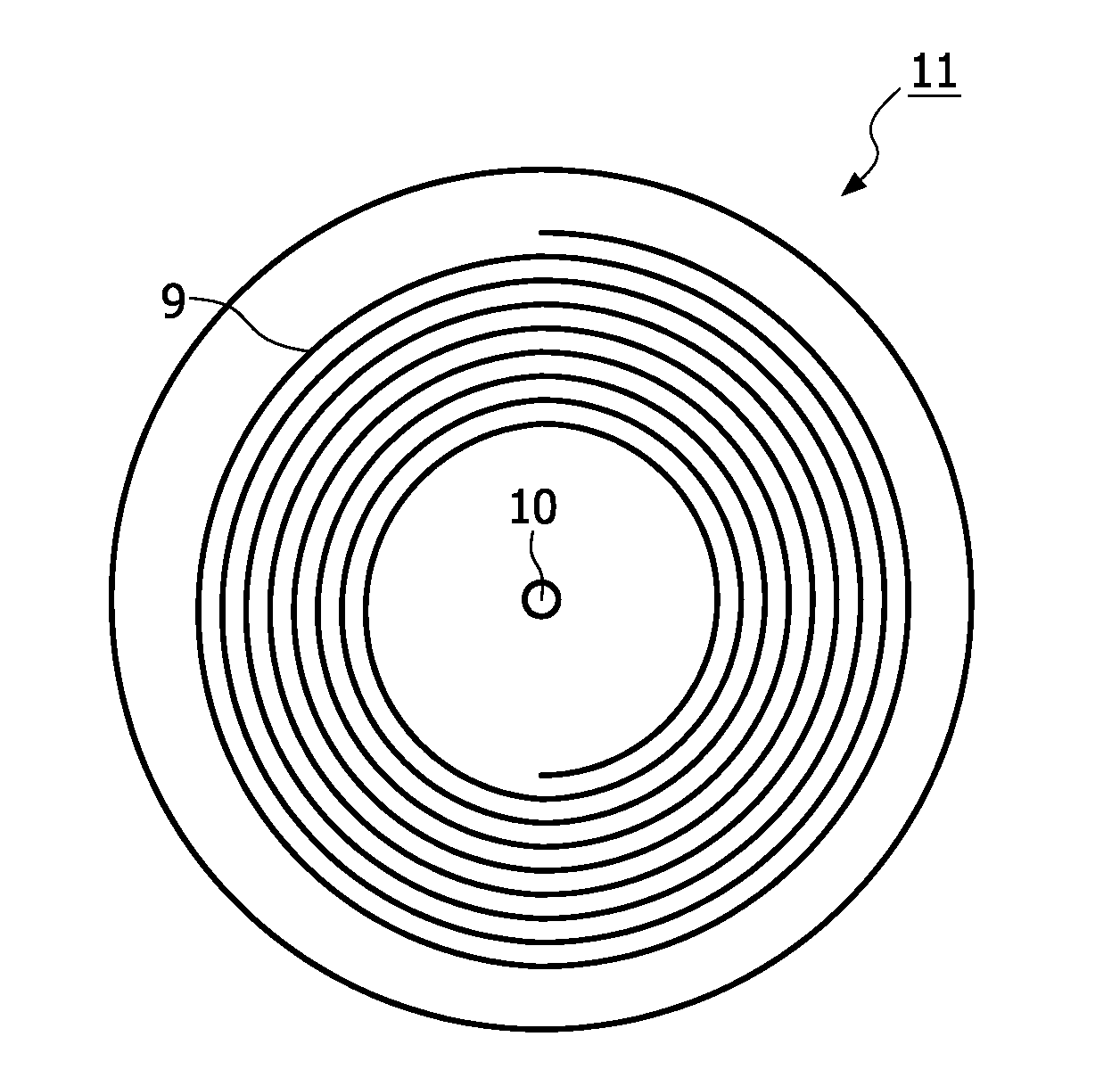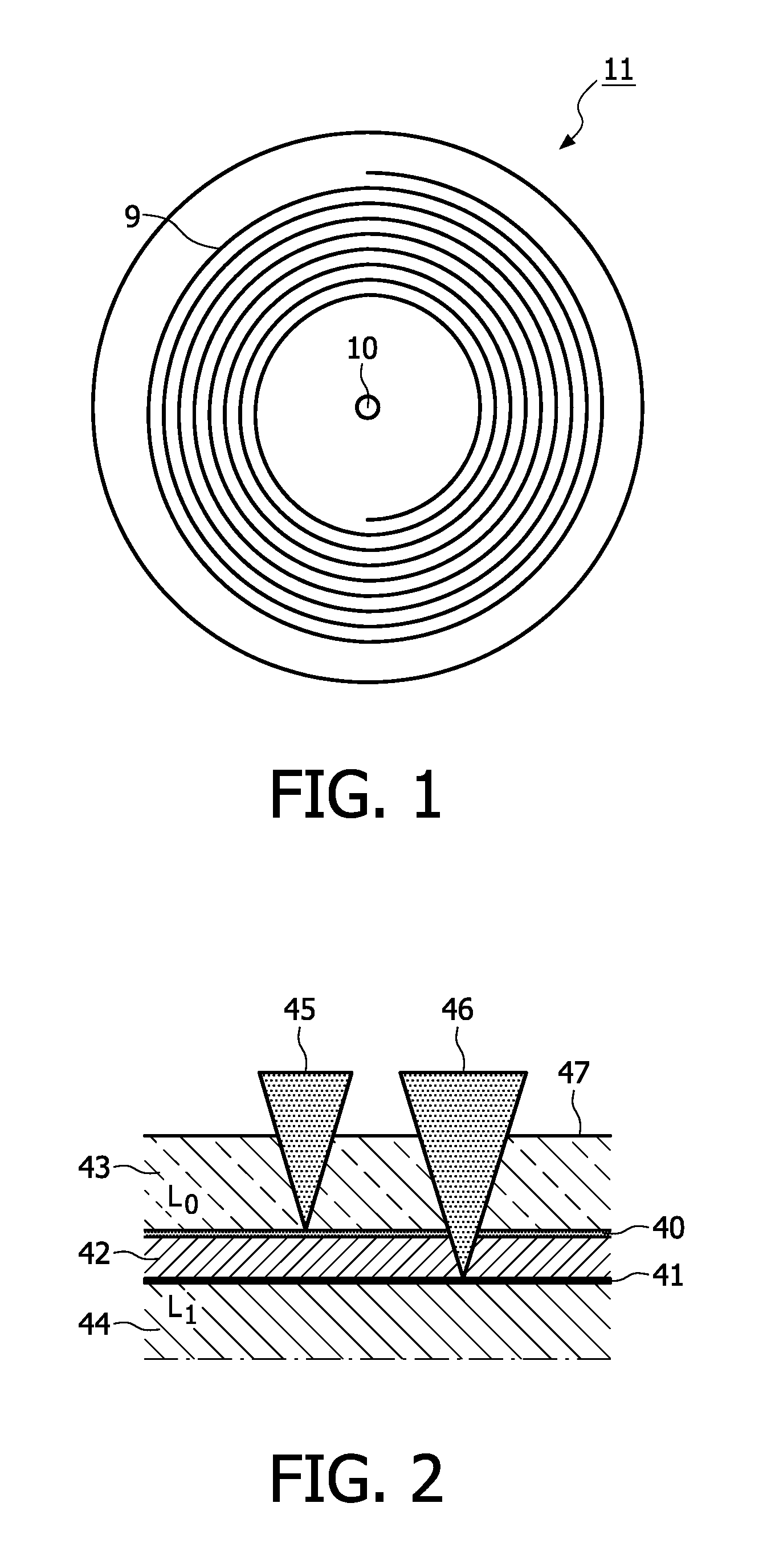[0008]Therefore it is an object of the invention to provide a device and method for formatting a record carrier of a multilayer type for preventing delays when the record carrier needs to be formatted and prepared for use in a playback device.
[0011]The effect of the measures is that the formatting now includes effective de-icing for a multilayer record carrier. In particular, the part of the record carrier that is de-iced first is part of said second layer of the multilayer record carrier, which part corresponds to a part of the first layer where user data is recorded first. Advantageously, such a partly de-iced multilayer record carrier can be used in a read-only type player without the risk that such player would accidentally scan a still blank area of the record carrier.
[0012]The invention is also based on the following recognition. When considering multilayer record carriers, the recording area on different
layers may be formatted according to a predefined recording format, for example DVD or BD. In such recording formats, the available recording space on each of the
layers is either combined to a singular, logically contiguous, user data area, or formatted as independent user data areas on each layer. Traditionally, when formatting a record carrier, the available recording space is formatted to a data area, having a lead-in area preceding the data area and a lead-out are at the end. As explained in the introduction with reference to U.S. Pat. No. 6,151,281, the formatting may include de-icing, i.e. writing dummy data starting at a radial position adjacent to the last written area in the direction of the track towards the lead-out area. The inventors have seen that, when applying the traditional de-icing to a multilayer record carrier, this would result in first completely de-icing the first layer, and subsequently de-icing further
layers by writing dummy data in a direction towards the lead-out area. However, physically a blank part of layers, opposite to already recorded user data on the first layer, provides a risk when such record carrier is rendered in a player that is not capable of correctly handling blank layers, such a read-only player. Such an incapable player might accidentally focus on a different layer, while trying to access the already recorded data on the first layer. The inventors provided a solution that reduces the risk for not fully de-iced multilayer record carriers by proposing the order and sequence of writing dummy data as in the current invention.
[0015]In an embodiment of the device, for accommodating the multilayer record carrier comprising at least a first layer and a second layer, and the track on the first layer extending in a first direction and the track on the second layer extending in a second direction opposite to the first direction for constituting the user data area having a first part on the first layer, and a second part on the second layer, the formatting means are arranged for said de-icing by determining, as said first radial position, a location adjacent to a starting area preceding said first part in the first direction, and writing said dummy data in dummy units, a first dummy unit being recorded on said second layer at a location adjacent to a terminating area following said second part in the second direction. This has the
advantage that said first radial position is a
fixed position, and the first layer for recording user data is a fixed layer, that are derived from the predefined recording format. Therefore the location for starting the writing of the dummy data is also fixed, which easily allows de-icing the multilayer having opposite track direction on different layers. In a further embodiment of the device the formatting means are arranged for said de-icing by writing subsequent dummy units after the first dummy unit on said second layer at a sequence of adjacent positions adjacent to the first dummy unit, the sequence of adjacent positions having a direction opposite to the second direction. Hence the sequence is recorded in a direction opposite to the track direction of the respective layer being de-iced.
[0016]In an embodiment of the device the formatting means are arranged for said de-icing by determining a second radial position on the first layer, which second radial position is indicative of a boundary radial position up to which, on the first layer, user data will be recorded according to the predefined recording format, and writing dummy data on the second layer of the record carrier from the first radial position up to the second radial position. This has the
advantage that the second layer will be de-iced first, while, in the mean time, data may be recorded on the first layer.
[0017]In an embodiment of the device the formatting means are arranged for said de-icing by determining a third radial position on the first layer, which third radial position is indicative of an intermediate radial position up to which, on the first layer, user data has already been recorded, writing dummy data on the second layer of the record carrier from the first radial position up to the third radial position, and subsequently writing dummy data on a location on the first layer adjacent to said third radial position. This has the
advantage that de-icing starts with an area of the second layer opposite the part of the first layer that already contains user data, and continues with de-icing the first layer adjacent to the recorded user data. This prevents the above incapable player from touching a blank area on the first layer immediately following the recorded user data.
 Login to View More
Login to View More  Login to View More
Login to View More 


